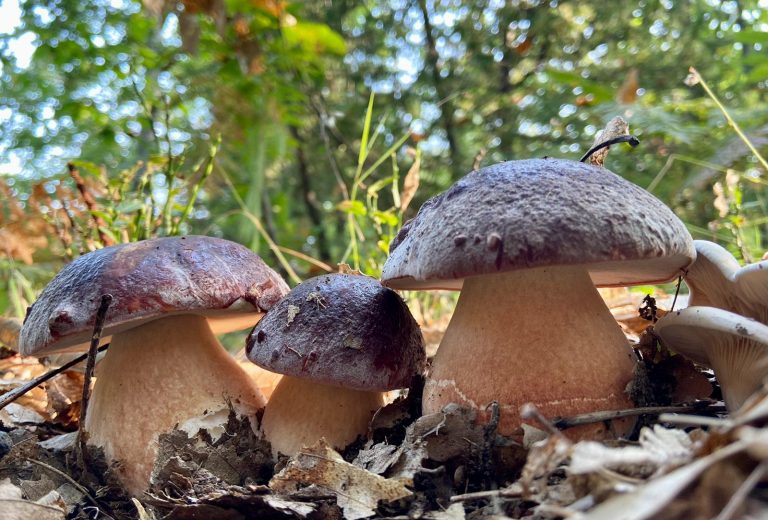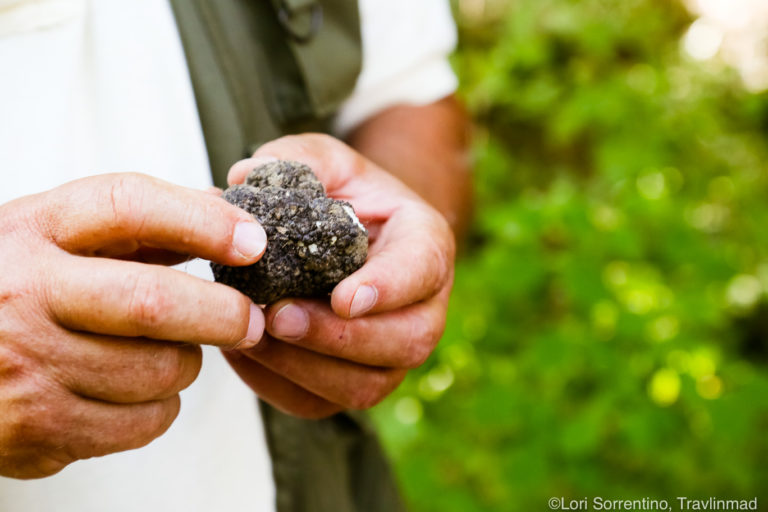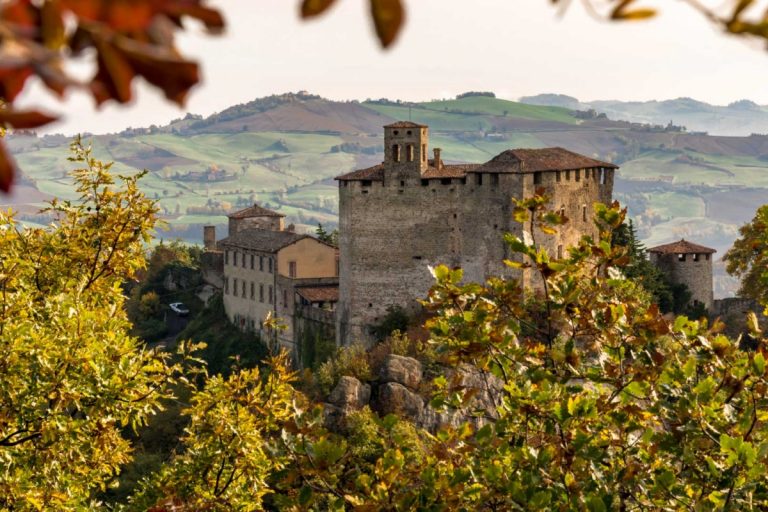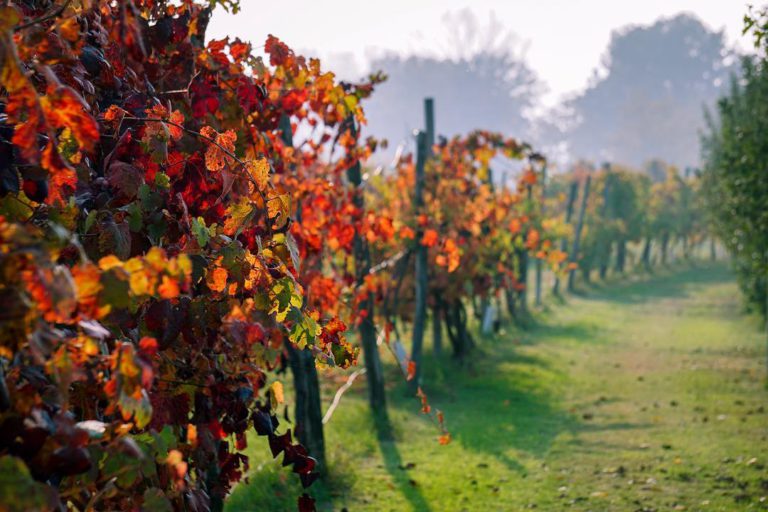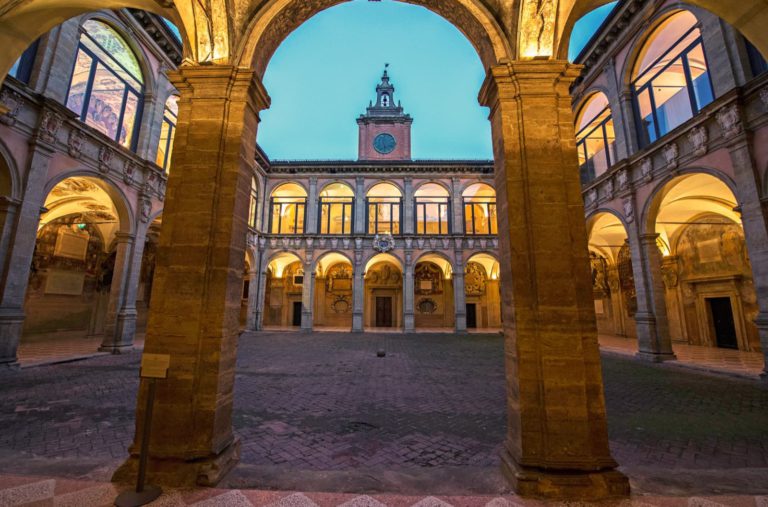Autumn weekends are perfect for hunting chestnuts. At this time of year, the woods of Emilia-Romagna are awash with colour, scent and enchanting landscapes, making them the perfect destinations for slow tourism and an escape from everyday life.
Did you know that 13 different varieties of chestnut grow in Emilia-Romagna? Examples include the Marrone IGP from Castel del Rio, one of the finest in Italy, and the Marrone di Pavullo, which is ideal for producing marrons glacés.
However, not all chestnut woods allow public harvesting (some are privately owned), so it is advisable to check with the local council or tourist office in advance.
However, even if you can’t collect any chestnuts, you can still enjoy a walk in the woods, crunching on the fallen chestnut burrs and admiring the autumn colours.
→ Here are some suggestions for outdoor walking routes where you can enjoy the silence of nature.
The Chestnut Trail in Borgo Val di Taro (PR)
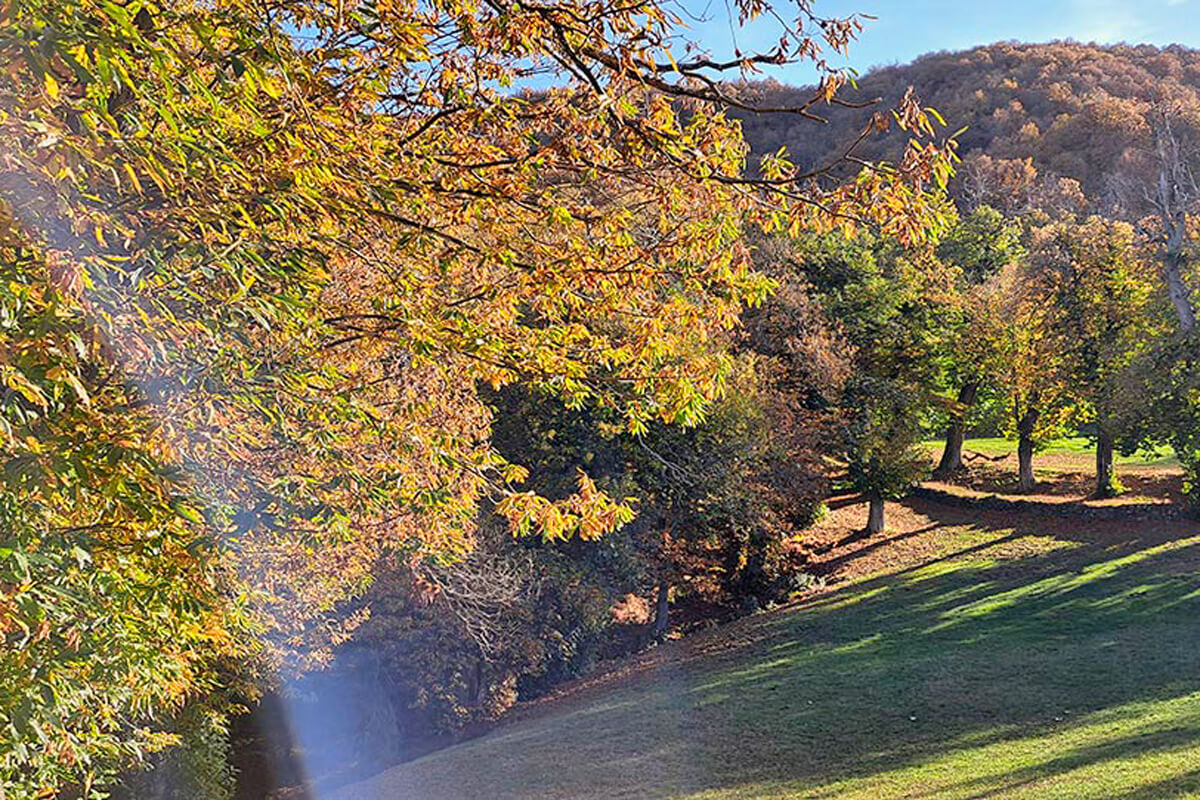
The Chestnut Trail in Val di Taro is an eight-kilometre walk or drive through streams, woods, chestnut groves and stone houses. It starts from Borgo Val di Taro station, the main town in this valley, where the famous porcini mushroom IGP grows.
The road is the provincial road that runs along the Muraglione, an embankment built in 1800 to protect against flooding from the Tarodine stream.
After five kilometres, having passed the village of Grifola, follow the municipal road until you reach the ancient village of Case Vighini, a cluster of medieval stone houses. The atmosphere is calm and timeless.
From Case Vighini, a path through the trees leads to Prato dell’Orsaresso through chestnut woods.
On the way back, you can also explore the other beautiful villages in the valley: Albareto, Bedonia, Compiano and Tornolo.
To taste. Panelle made from chestnut flour, raisins, pine nuts and fennel seeds, cooked on special plates called testarelle.
The chestnut woods of Matilda of Canossa in Carpineti (RE)

Just one hour from Reggio Emilia lies the Tuscan-Emilian Apennine National Park, home to woods, streams and the castles of Matilda of Canossa.
The most famous chestnut woods are in Carpineti, home to one of Matilda’s castles. Another good place to find chestnuts is the village of Marola, which is perched on a hill and has a thousand-year-old abbey. It is located 30 km from Reggio Emilia.
You can pick chestnuts for free in the Metato del Pan d’Albero area (metati are ancient chestnut drying rooms).
In the chestnut woods of Monte Borello, where the Seminary is located, you can pick chestnuts along the Sentiero della Madonnina (Madonnina Trail) every weekend in October, with a small donation to the missionaries.
Nineteen kilometres from here is Toano, another Matildic village home to a famous monumental chestnut tree measuring 19 metres in height and 182 cm in diameter. It is said that partisans used its hollow trunk as a hiding place.
To taste. Try Carpineti’s sweet tortellini with a chestnut, walnut and quince jam filling.
The European Chestnut Route between Modena and Bologna
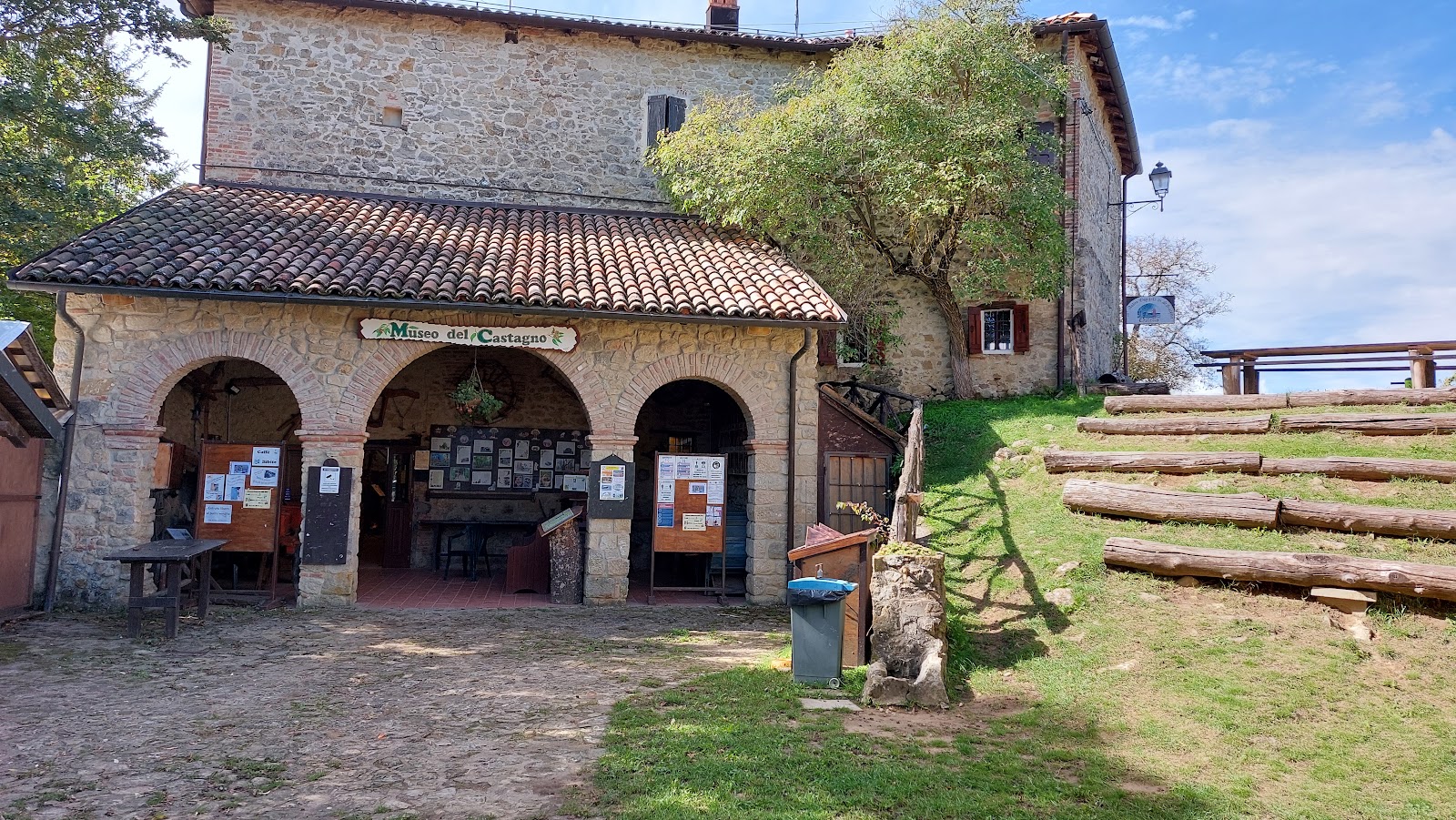
The European Chestnut Route starts in Turkey and ends in Portugal. One section of this international itinerary crosses the Apennines between Modena and Bologna, winding its way through the Parco dell’Antico Frignano.
Here, all the villages are surrounded by chestnut woods: Zocca, Montese, Fanano, Pavullo, Frassinoro, Montecreto, Montefiorino, Polinago, Prignano, Guiglia, Serramazzoni, Palagano, Granaglione, Monte San Pietro and the nearby towns of Montepastore, Vergato and Castel d’Aiano.
Among the oldest chestnut groves are those of Castelluccio di Montese and Fellicarolo, where there is a beautiful waterfall.
In Zocca, the Museum of Chestnuts and Borlengo extends beyond the indoor rooms and continues along a path through the chestnut groves of Monte San Giacomo.
To taste. Ciacci di castagne are thin crêpes made from chestnut flour, to be enjoyed on their own or stuffed with cold cuts and cheese.
Discovering the Marrone chestnut of Castel del Rio (BO)
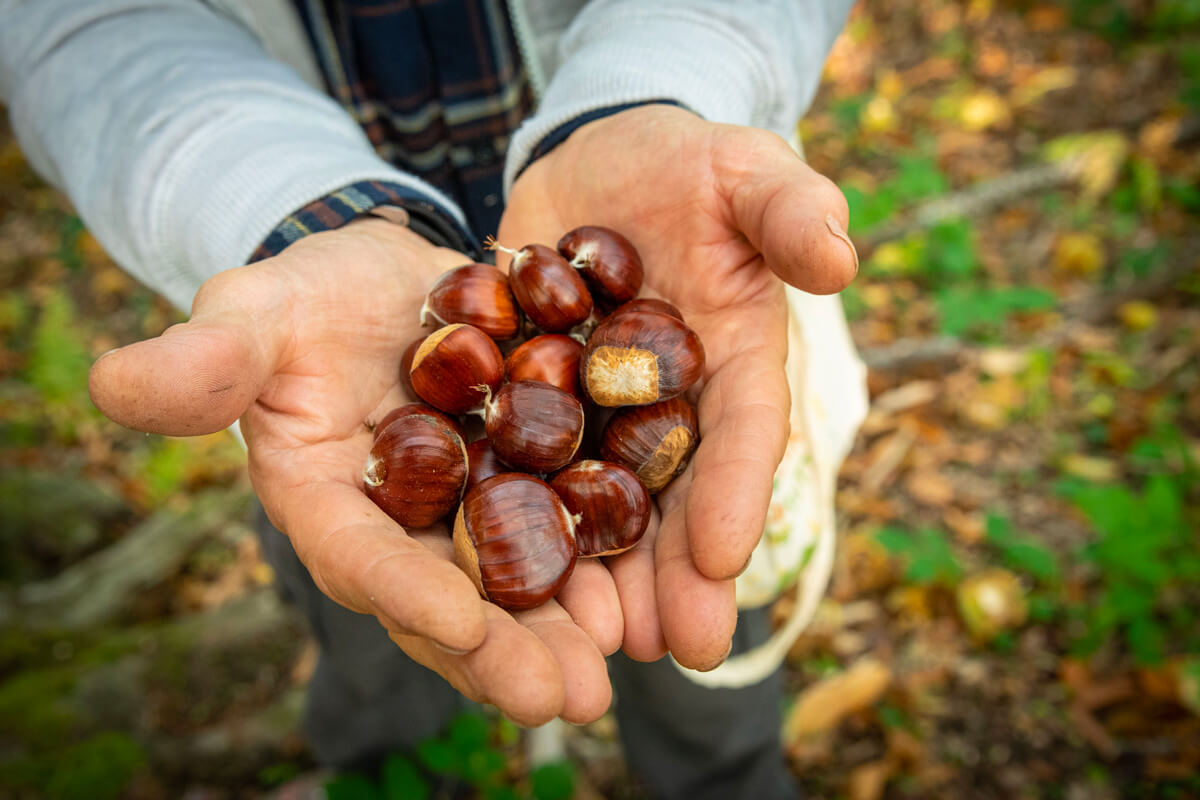
Castel del Rio is a village of stone houses built on the banks of the Santerno River. An ancient arched bridge, the Ponte degli Alidosi, stands here. Located just half an hour from Imola, it is a peaceful place nestled between Romagna and Tuscany.
A unique chestnut, or marrone, grows here. This larger, softer and more prized fruit grows in small quantities on the wooded slopes overlooking the village.
The marrone di Castel del Rio is found in many of the surrounding villages: Fontanelice, Casalfiumanese and Borgo Tossignano.
A not-to-be-missed excursion is to the thousand-year-old Valmaggiore church, which has a glass roof allowing you to see the sky. The final stretch to reach the top of the 700-metre hill, where Valmaggiore is located, is unpaved, but the climb is well worth the effort.
To taste (and take home). The shops display real delicacies in their windows, such as castagnaccio, chestnut cream, tarts, chestnut ravioli and chestnut polenta.
In the Casentino Forest National Park (FC)
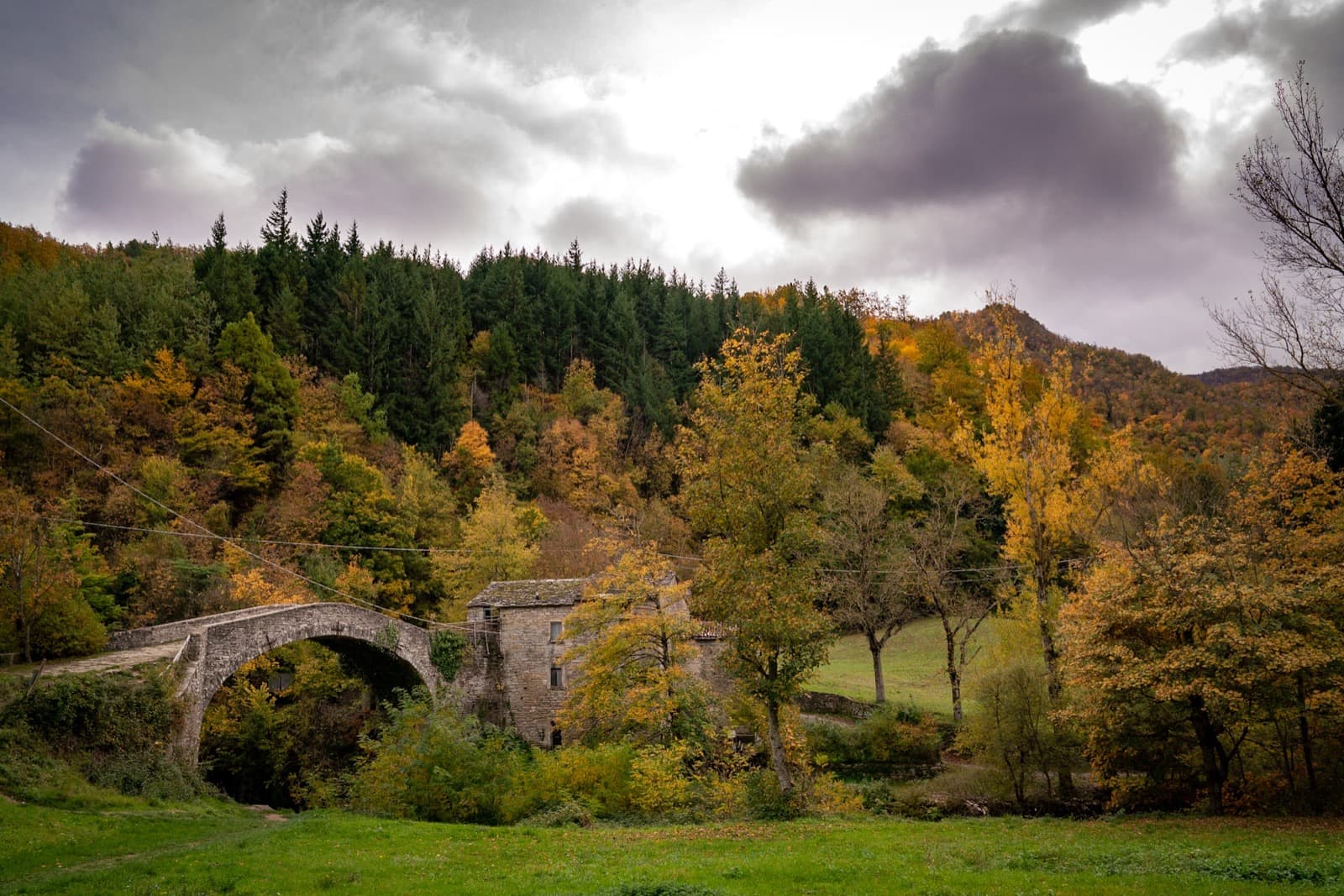
For centuries, chestnuts have fed the inhabitants of this Apennine region rich in forests and thermal springs. Just step outside any of the towns in the park, such as Bagno di Romagna, Verghereto, Premilcuore, Dovadola, or San Piero in Bagno, to find yourself surrounded by ancient forests.
A beautiful walk starts from the centre of Premilcuore and follows a stretch of the Via del Sale, the road that once connected these territories to nearby Florence.
Shortly afterwards, you will come across the Grotta Urlante, a hidden paradise of roaring water, formed by a 16-metre arch. The waterfall is located in Giumella, under the Ponte Nuovo.
From here, you can climb to the panoramic summit of Monte Arsiccio and then return to the village, where you can stop at the visitor centre of the Parco Nazionale delle Foreste Casentinesi Monte Falterona e Campigna.
To taste. Castagnaccio, a mountain dessert, is the perfect street food.
Valconca and Valmarecchia, nature a stone's throw from Rimini sea
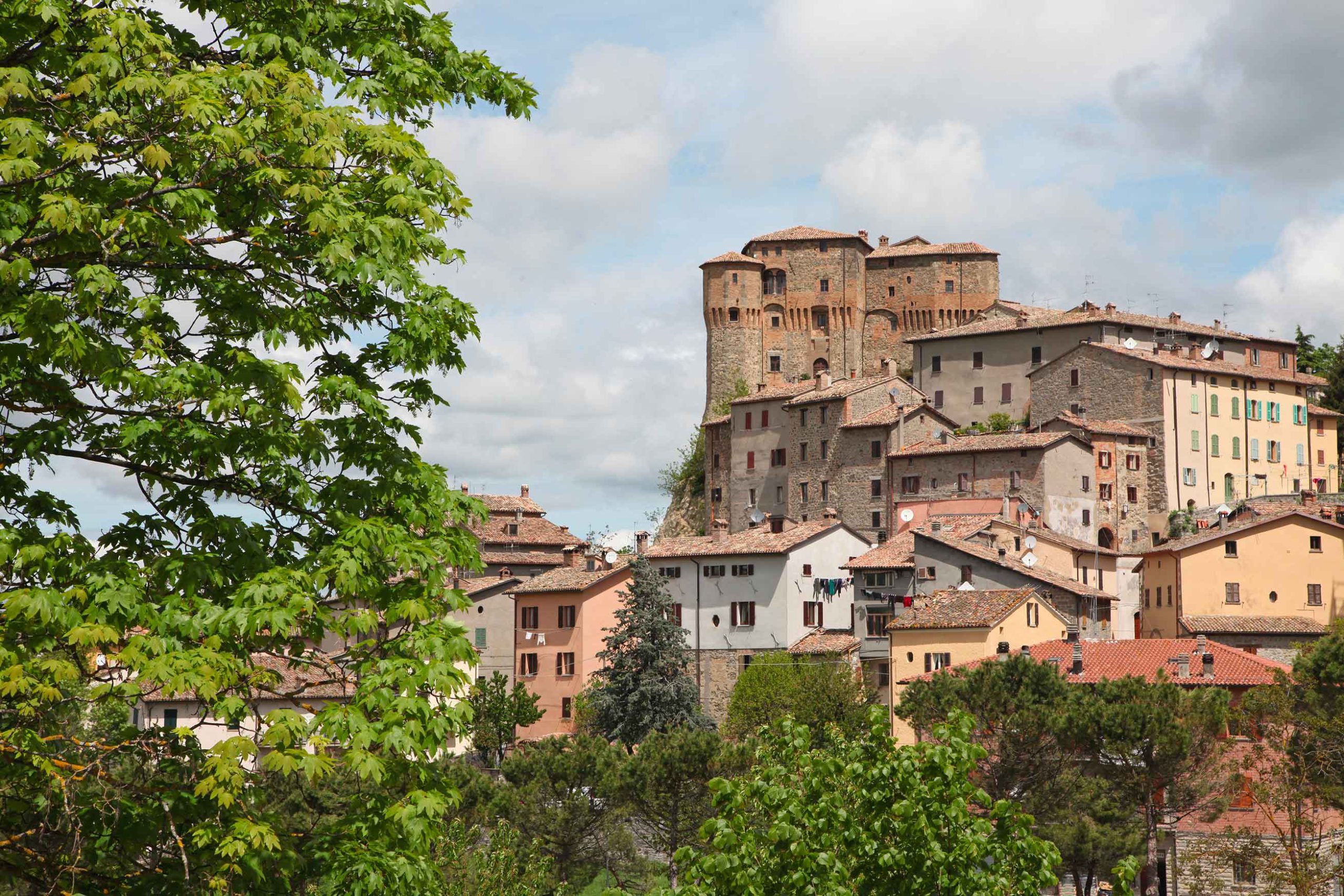
In autumn, the Valmarecchia and Valconca valleys are enveloped in poetry and a kaleidoscope of colours. The landscape is a succession of woods and hilltops, and there is no shortage of chestnut trees.
Before setting off with a basket under your arm, it is always a good idea to check with the local tourist office.
At Monte Faggeto in Montefiore Conca, there is a beautiful and large forest where you can go trekking among the chestnut trees. Other chestnut forests are located on Monte Pincio in Talamello.
In Sant’Agata Feltria, land of white truffles but also chestnuts, in the Ca’ Francescone area, you can ask on which days and at what times you can enjoy this experience.
To taste. A flavourful risotto where rice and chestnuts are cooked together with many aromas.
Author

Daniela Camboni
Journalist and mum.
Traveller. I adore happy endings.
You may also like
October Food Festivals in Emilia-Romagna
by Elisa Mazzini /// September 16, 2025
Oil, truffle and fossa cheese: November food festivals in Emilia-Romagna
by Celestina Paglia /// October 1, 2025
5 beaches in Emilia-Romagna to enjoy the seaside in Autumn
by Davide Marino /// November 3, 2017

Interested in our newsletter?
Every first of the month, an email (in Italian) with selected contents and upcoming events.
Autumn in Emilia-Romagna: 5 fall travel ideas
by Davide Marino /// October 14, 2024
